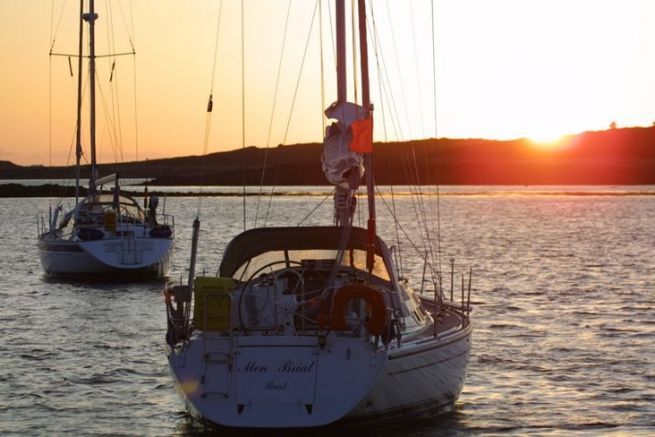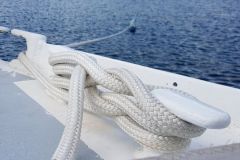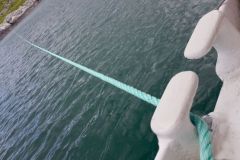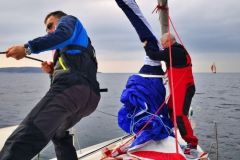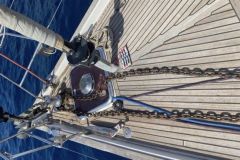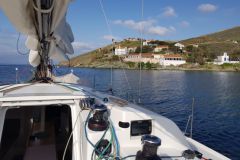To benefit from a quality wetting, it is necessary to prepare it well.
1- Study the map
A very detailed map if possible in order to better study the characteristics of the anchorage area and the nature of the bottom.
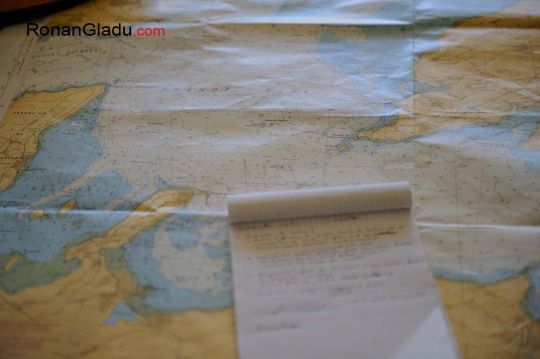
2- Observe wind and current
Even if the chosen area is sheltered from the wind, the presence of currents and their reversal as well as the tidal range must also be considered.

3- Observe other ships
Indeed, the behavior of the other vessels in relation to the wind and the current is an indication that allows you to validate your choices. Also pay attention to the density of vessels in the area in order to to evaluate as best as possible the radius of avoidance of each one at the time of the observation and according to the tide and the possible rotations of wind and current.
4- Prepare the mooring
If the anchor is not in place in the davit, you must take it out of the locker by passing under the balcony and check that the chain is free. BUT FIRST, you must protect your hands and put on gloves. The links of the chain are not always trimmed and may hurt you.
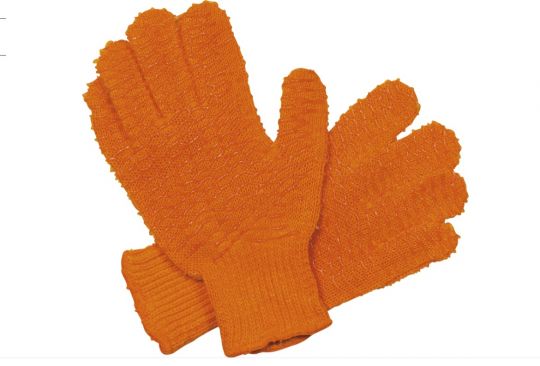
Small reminder: We often confuse mesh and link.
- The link is the basic element of an anchor chain. There are chain links with a stay, chain links without a stay, and chain links that are used to connect the links together. The links are calibrated and have a ratio between their diameter and other dimensions.
- The link is the part of an anchor chain between two shackles or two removable links and is 30 m long in the navy and 27.50 m in the merchant navy. A link is considered to be about 15 fathoms long, a figure taken from the sailing navy.
5- Oring or not?
This device consists of to strike a rope, called orin, on the front of the anchor . You have two options: either you bring the orin back to the boat or you hit a buoy on the orin.
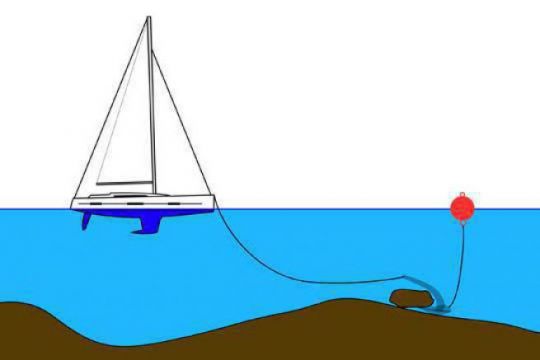
What's the point? In a busy anchorage area, it is impossible to rule out the possibility that, despite all precautions, your anchor may get caught under another boat's chain. You will have to free it by tilting it with the anchor, which must be free. The same is true in rocky areas where it is also possible that your anchor gets caught under a rock... The anchor line can prevent a dive.
6- Wet
The ideal is to anchor on a sandy bottom or mud and to avoid algae, weed beds and rocks.
- Come into the wind with the motor or the sail, wait for the boat to stop or even let it sway a little and gradually release the chain. At the beginning 1,5 times the water height and block to let the boat get back into the wind or the current (this is called "making head").
- Then let the chain be spun gradually to the desired length.
- It is customary to spin a length of chain equal to at least 3 times the maximum height of water that will be under the boat (at high tide). Sometimes, at night or because of the fear of stronger winds, you should not hesitate to anchor 4 to 5 times the height of water if you have the space to do so.
7- Check the anchorage
Taking landmarks (with a compass or a line-up) allows you to check if the boat is well anchored. Putting 20 m of chain at a depth of 3 m is not a guarantee if the chain has been spun too fast and forms a pile on the bottom of the water..
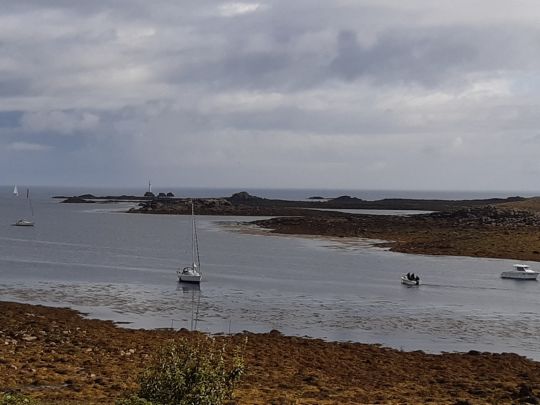
8- Let us know that you are at anchor
Install a mooring ball and anchor lights at night. These are safety features, as they make you visible to other boaters and inform them about your "stationary course".
The mooring ball is no longer in the mandatory inventory, but it is still mandatory for a mooring. You have to put it on if you anchor.

 /
/ 